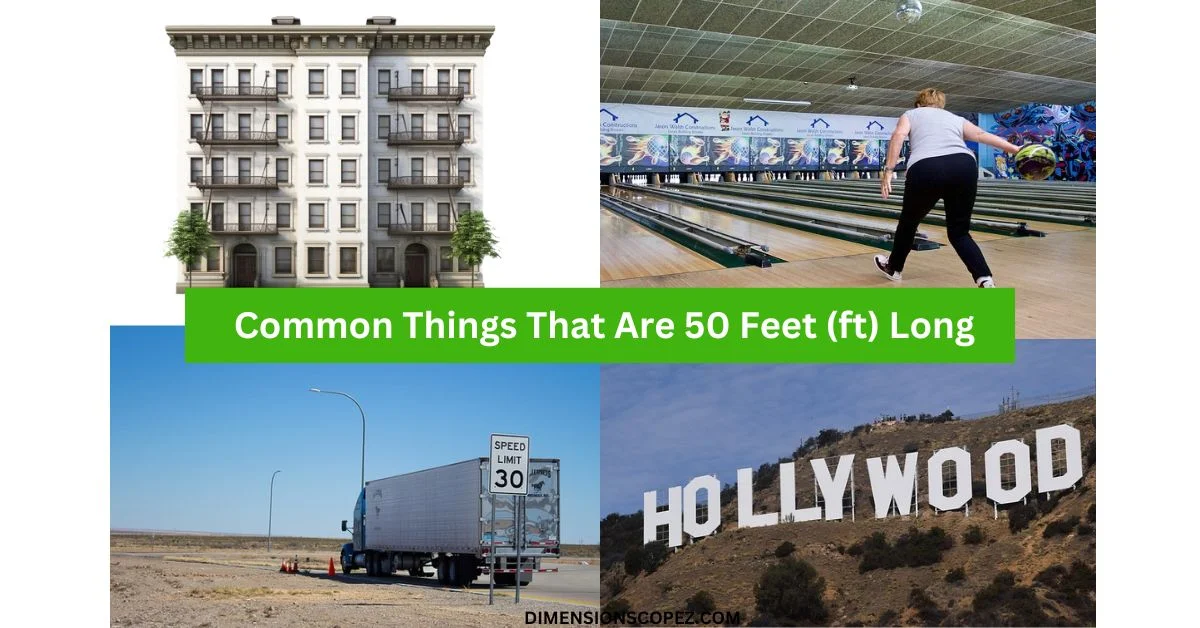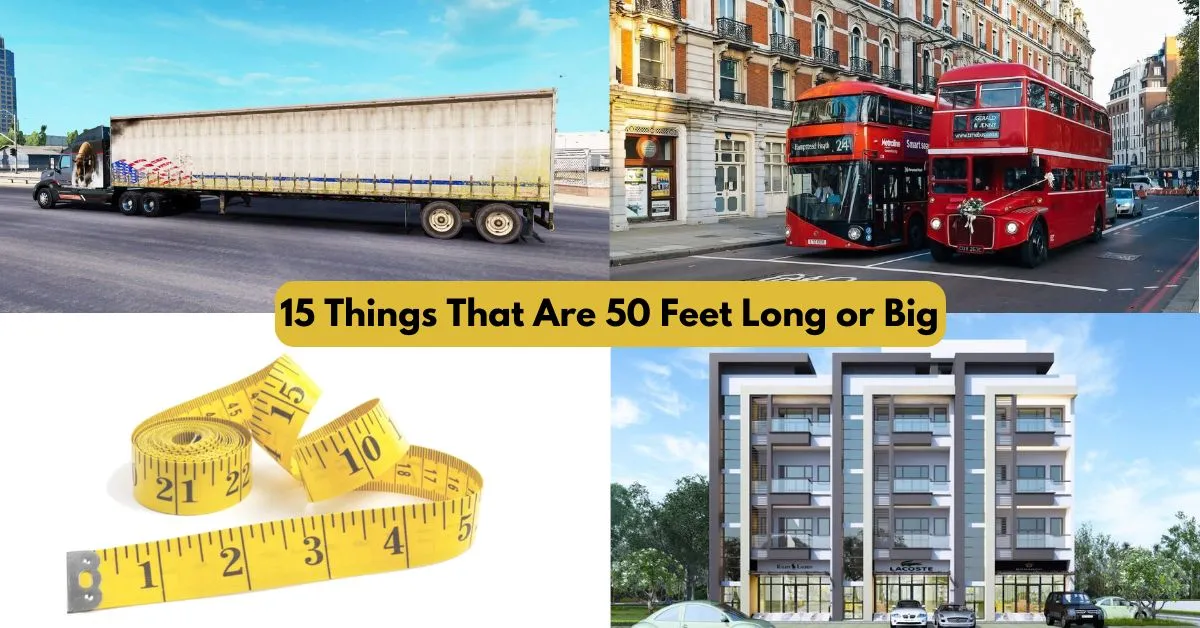Understanding distances can be challenging when we only see numbers on paper. Fifty feet may sound abstract, but when put into context, it becomes tangible. Using 50 feet visualized, we can relate this measurement to objects, buildings, and natural elements that are familiar, allowing readers to grasp the scale easily. Visualising distances helps bridge the gap between numbers and real-world perception.
Many people underestimate what 50 feet represents because they rarely interact with measurements of this scale daily. With 50 feet visualized, you can picture five cars parked bumper to bumper, a four-storey building’s height, or even a blue whale’s length. Contextual comparisons transform abstract distances into practical understanding, making it easier to relate to everyday experiences and larger-scale concepts.
Understanding 50 Feet
To understand 50 feet clearly, it is helpful to convert it into different units. Fifty feet equals approximately 15.24 metres, 600 inches, or roughly 16.67 yards. This variety of measurements provides multiple perspectives to imagine distances. When readers explore 50 feet visualized, using metric and imperial units together enhances comprehension, particularly for audiences familiar with different systems.
Another method to comprehend 50 feet is by comparing it to familiar structures and objects. A four-storey building, for example, is about 50 feet tall, while a standard basketball court measures slightly less than this distance in width. Using 50 feet visualized comparisons helps readers connect abstract numbers to physical examples they see in their surroundings daily.
50 Feet Visualized in Everyday Objects
One of the most relatable ways to imagine 50 feet is through everyday objects. Consider five average-sized cars lined up end-to-end or slightly more than two typical residential driveways. These simple comparisons make 50 feet visualized instantly understandable. Relating distances to everyday objects allows readers to visualise them without complex calculations or abstract thinking.
Sports and recreational spaces also provide practical reference points. A basketball court, a long hallway, or a garden pathway can help readers conceptualise 50 feet accurately. Using 50 feet visualized in everyday scenarios strengthens memory and comprehension, enabling people to estimate distances effectively in both indoor and outdoor environments.
Large-Scale Comparisons of 50 Feet Visualized

Thinking beyond everyday objects, 50 feet can also be compared to larger-scale phenomena. For instance, visualising one million people standing together, each occupying about two square feet, helps contextualise enormous crowds. Applying 50 feet visualized in such scenarios provides perspective, showing how seemingly small measurements can accumulate into significant scale when multiplied or combined.
Landscapes and expansive areas also help illustrate 50 feet. Consider 1,000 acres or a large open field; imagining these spaces in segments of 50 feet makes it easier to grasp their size. By using 50 feet visualized comparisons in outdoor contexts, readers can connect measurement concepts to nature, architecture, or public spaces, enhancing spatial understanding.
Extreme and Unique Comparisons of 50 Feet Visualized
For striking comparisons, 50 feet can be related to extraordinary objects or natural phenomena. A blue whale’s length often aligns with 50 feet, while waterfalls, tall trees, or even racetracks can provide dramatic imagery. These examples make 50 feet visualized engaging, helping readers remember distances by linking them to impressive or awe-inspiring references.
Precious metals also provide memorable comparisons. Visualising one ton of gold or even imagining all the gold in the world offers a unique perspective on scale and size. By combining 50 feet visualized with unusual or extreme examples, readers gain a more holistic understanding of how large distances feel in both tangible and conceptual contexts.
Scientific and Medical Visualisation
Visualisation is not only helpful in daily life but also in scientific and medical contexts. Terms like “ovary not visualised” or “what happens if ovaries are not visualized” demonstrate the need for accurate interpretation of size and scale. Using 50 feet visualized as an analogy helps readers understand how visualisation can clarify measurements, even in complex or abstract scenarios.
Medical imaging relies heavily on visualisation to interpret scans, measurements, and organ sizes. For instance, comparing organ dimensions or abnormalities to familiar objects can simplify complex concepts. By applying the principle of 50 feet visualized, readers can appreciate the importance of size perception in both education and professional scientific practice.
Why Visualisation Helps
Visualisation transforms abstract numbers into tangible understanding. Without it, measurements like 50 feet can feel meaningless. Using 50 feet visualized techniques enables readers to mentally map distances, estimate spaces accurately, and relate concepts to familiar objects. It is a tool that enhances learning, comprehension, and spatial reasoning for a wide audience.
Beyond education, visualisation assists in planning, design, and practical problem-solving. Architects, engineers, educators, and everyday individuals benefit from imagining measurements before acting. With 50 feet visualized, people can plan construction, measure recreational areas, or estimate distances in outdoor activities effectively, improving both accuracy and intuition.
Conclusion
Visualising 50 feet allows us to connect abstract numbers to the tangible world. From cars and buildings to whales and waterfalls, 50 feet visualized comparisons make understanding distances easier and more engaging. Whether for everyday knowledge, education, or professional use, visualisation transforms numbers into relatable experiences that are easy to comprehend and remember.
You may also read: Theo Usherwood: Biography, Career, and Political Commentary in the UK







